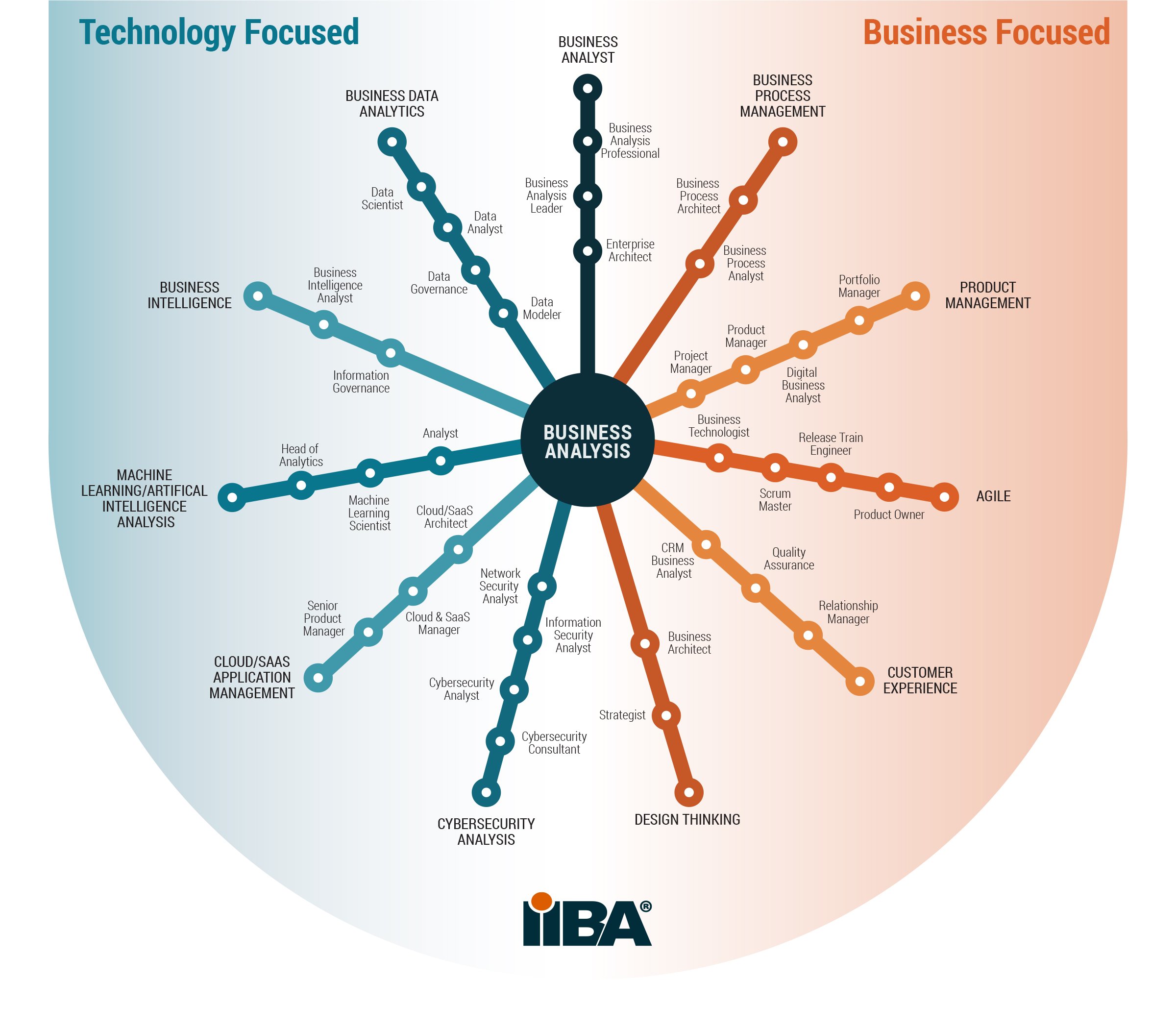In today’s fast-paced business landscape, the ability to harness data analytics can be a game changer for organizations seeking to thrive and innovate. By transforming raw data into actionable insights, companies can make informed decisions that drive growth, optimize operations, and enhance customer experiences. In a world where competition is fierce and consumer expectations are ever-evolving, understanding how to leverage data analytics is not just an advantage—it’s a necessity. This exploration reveals the profound impact that data-driven decision-making can have on a business’s trajectory, paving the way for smarter strategies and a more agile approach to market challenges.
Table of contents
ToggleThe Role of Data Analytics in Business Strategy

Data analytics has emerged as a vital component in shaping effective business strategies. By systematically examining data, organizations can foster informed decision-making that aligns with market demands and consumer behavior.
At the heart of data analytics lies the ability to uncover actionable insights from vast datasets. Companies can track trends, identify patterns, and discern the underlying factors affecting performance. This retrospective analysis guides future actions, ensuring that businesses are not just reacting but proactively steering toward growth.
Real-time data analysis serves as a game-changer. Organizations can monitor their operations and performance metrics continuously, allowing them to respond swiftly to market fluctuations. Quick adjustments based on timely data can enhance efficiency and optimize resources, significantly impacting the bottom line.
Utilizing data analytics can also improve customer engagement. By analyzing consumer preferences and behaviors, businesses can tailor their offerings to meet specific needs and desires. This personalization leads to stronger customer relationships and increased loyalty, driving repeat business.
Moreover, implementing data analytics in strategic planning allows companies to benchmark their performance against competitors. With clear visibility into market positioning, organizations can identify their strengths and weaknesses, recalibrating their strategies to seize new opportunities.
- Data-driven decisions enhance operational effectiveness.
- Predictive analytics foresees trends, aiding in resource allocation.
- Enhanced risk management through better forecasting.
Incorporating data analytics into your business decisions not only promises immediate benefits but also ensures long-term sustainability. The foresight gained from comprehensive data analysis positions businesses to navigate the complexities of the modern market landscape seamlessly.
Understanding Key Performance Indicators
Data analytics serves as a robust framework that enables businesses to turn numbers into narratives. By harnessing the power of data, organizations can make informed decisions that pave the way for strategic growth. This transformation allows leaders to navigate complex market dynamics with greater clarity and confidence.
Integrating data analytics into business strategy enhances the ability to spot trends, understand customer behavior, and forecast future opportunities. Companies that embrace this shift witness a remarkable evolution in their decision-making processes, enabling them to be proactive rather than reactive.
Understanding key performance indicators (KPIs) is pivotal in this analytical journey. These metrics offer a quantifiable measure of success aligned with business objectives. By focusing on the right KPIs, organizations can:
- Identify strengths and weaknesses within operations.
- Monitor progress towards goals in real-time.
- Make data-driven adjustments to improve performance.
Effective use of data analytics requires a solid grasp of these key indicators. They act as signposts, guiding businesses toward optimal strategies and ensuring resources are utilized efficiently. The clear alignment of KPIs with overall strategies fosters a culture of accountability and continuous improvement.
This alignment ultimately cultivates a deep understanding of customer needs and market trends, further enhancing the organization’s agility in adapting to changing environments. By leveraging data analytics effectively, businesses can thrive in a competitive landscape and unlock their full potential.
Data-Driven Decision Making
Data analytics plays a pivotal role in the development of robust business strategies. By harnessing the power of data, organizations can gain a competitive edge, identifying trends and patterns that guide decision-making processes. The integration of data analytics into business planning allows companies to streamline operations, better allocate resources, and enhance customer experiences.
One of the most significant advantages of incorporating data analytics into business strategy is the shift towards data-driven decision making. This approach eliminates guesswork, relying instead on factual insights derived from large datasets. When businesses act on solid data, they tend to:
- Identify emerging market trends
- Understand customer preferences and behaviors
- Enhance operational efficiency
- Mitigate risks by forecasting potential challenges
Organizations that utilize data analytics can make informed decisions that align with their long-term goals. By continually analyzing performance metrics, businesses can pivot quickly in response to market changes. This agility not only fortifies existing strategies but also opens avenues for innovation.
The ability to visualize data through dashboards and reports makes insights more accessible. This encourages collaboration across departments, fostering a culture where analytics is embedded in daily operations. As more team members engage with data, it becomes an integral part of the company’s mindset, leading to a more cohesive approach to problem-solving.
In addition to improving internal processes, data analytics enhances the customer journey. Companies can tailor marketing efforts based on real-time feedback, ensuring that messages resonate with target audiences. Furthermore, by tracking customer interactions over time, businesses gain invaluable insights into user satisfaction, allowing them to refine their offerings continually.
Ultimately, the integration of data analytics into business decisions transforms how organizations perceive and respond to their environments. Embracing a data-centric ethos empowers teams to make smarter, more strategic choices that drive growth and sustainability.
Implementing Data Analytics in Your Organization
In today’s fast-paced business environment, data analytics has emerged as a vital tool for enhancing decision-making. By harnessing the power of data, organizations can uncover valuable insights that drive strategies and optimize operations.
To successfully implement data analytics in your organization, it’s essential to follow a structured approach:
- Identify the Goals: Establish clear objectives for what you want to achieve through data analytics. For instance, improving customer satisfaction or optimizing supply chain efficiency.
- Choose the Right Tools: Select analytics software and tools that align with your goals. Consider options like Tableau, Google Analytics, or more sophisticated platforms depending on your organization’s needs.
- Collect Quality Data: Ensure you gather accurate and relevant data from various sources. This may include customer feedback, sales records, and market trends.
- Train Your Team: Equip your employees with the necessary skills and knowledge. Conduct training sessions to help them understand how to interpret data effectively.
- Analyze and Interpret: Regularly analyze the data collected and interpret the results. Look for patterns, correlations, and trends that can inform your business decisions.
- Act on Insights: Use the insights gained from your analysis to make informed decisions. Implement changes in processes, marketing strategies, or product offerings based on what the data suggests.
- Monitor and Evaluate: Continuously monitor the impact of your decisions and evaluate the effectiveness of your data analytics efforts. Adjust your strategies as necessary.
By integrating data analytics into your decision-making process, your organization can not only enhance operational efficiency but also gain a competitive advantage in the market. Transforming your business decisions through data is no longer a luxury but a necessity for sustainable growth.
Choosing the Right Tools and Technologies
Implementing data analytics in your organization can dramatically enhance business decision-making processes. Understanding which tools and technologies to utilize is paramount to harnessing the full potential of data. The right choice can lead to more informed strategies and improved operational efficiency.
When it comes to choosing the right tools and technologies, consider the following factors:
- Scalability: The tools should be able to grow with your business needs.
- User-friendliness: Select software that is intuitive and easy for team members to adopt.
- Integration: Ensure compatibility with existing systems and datasets.
- Cost: Analyze the budget versus the expected return on investment.
- Support and community: Look for tools with strong customer support and active user communities.
Some popular data analytics tools include:
- Tableau: Known for its powerful visualization capabilities.
- Power BI: Offers an integration with other Microsoft products, making it versatile.
- Google Analytics: Ideal for tracking website traffic and user behavior.
- R and Python: Programming languages that excel in statistical analysis and machine learning.
Once the right tools are in place, your organization can begin to explore data-driven insights that drive smarter business decisions. This approach fosters an environment where decisions are backed by quantitative evidence rather than gut feelings.
Building a Data-Driven Culture
In today’s fast-paced business environment, data analytics plays a pivotal role in shaping effective decision-making. By integrating data analytics into your organization, you can unlock valuable insights that enhance operational efficiency, improve customer satisfaction, and drive strategic initiatives.
Implementing data analytics requires a strategic approach that embeds data into the fabric of your organizational processes. Start by identifying key areas where data can have the most impact, such as:
- Customer Experience: Analyze customer feedback and behavior to tailor services and offerings.
- Operational Efficiency: Monitor and assess performance metrics to streamline processes.
- Market Trends: Use data to identify emerging trends and market demands.
Establishing a data-driven culture is essential for maximizing the benefits of data analytics. Encourage your team to embrace data as a critical resource for decision-making. This can be achieved through:
- Training: Offer ongoing training programs to enhance data literacy across all levels of the organization.
- Collaboration: Foster a collaborative environment where departments share data insights and strategies.
- Leadership Support: Secure commitment from leadership to prioritize data initiatives and cultivate a data-centric mindset.
By focusing on these elements, organizations can transform their decision-making processes, leveraging data analytics to respond proactively to challenges and opportunities in the marketplace.
Measuring the Impact of Data Analytics
Data analytics is not just a buzzword; it’s a powerful tool that can reshape the way businesses operate. By leveraging data-driven insights, organizations can make proactive decisions that enhance their overall performance.
Measuring the impact of data analytics involves examining key performance indicators (KPIs) that align with your business goals. These include:
- Increased Revenue – Tracking sales growth post-analytics integration.
- Cost Reduction – Identifying areas where expenses can be minimized without sacrificing quality.
- Improved Customer Satisfaction – Analyzing customer feedback and behavior to tailor services.
- Operational Efficiency – Monitoring workflows to pinpoint bottlenecks and streamline processes.
To truly harness the power of data analytics, businesses must adopt a culture of continuous improvement. This means regularly reviewing data sets, interpreting findings, and adjusting strategies accordingly. By implementing tools that facilitate real-time data collection and analysis, decision-makers can stay agile and responsive to market changes.
Furthermore, involving teams across departments fosters a collaborative approach to data interpretation. When everyone has access to relevant data insights, it encourages innovation and empowers employees to contribute to strategic initiatives.
Finally, investing in training for your team is essential. Ensuring that staff members are skilled in data analysis will not only maximize the value derived from analytics but also promote a data-centric mindset throughout the organization.
Tracking Business Outcomes
In today’s fast-paced business environment, data analytics stands out as a crucial tool for enhancing decision-making processes. Companies harness data to extract valuable insights, transforming raw numbers into meaningful information that impact strategic choices.
Measuring the impact of data analytics goes beyond just looking at charts and graphs. Organizations must identify key performance indicators (KPIs) that align with their goals. This way, businesses can effectively gauge the influence of their data-driven initiatives on overall performance.
Tracking business outcomes involves monitoring specific metrics that reflect the effectiveness of decisions. Here are some important metrics to consider:
- Revenue Growth: Analyzing sales data helps identify trends and forecast future revenue flows.
- Customer Retention Rate: Understanding customer behavior allows companies to implement strategies that enhance loyalty and satisfaction.
- Operational Efficiency: Assessing process efficiencies can lead to cost reductions and streamlined operations.
By regularly evaluating these metrics, businesses can determine the success of their data analytics strategies. This agile approach means companies can adapt and refine their tactics, ensuring they remain competitive and responsive to market changes.
Moreover, integrating data analytics into daily operations fosters a culture of informed decision-making. Employees across all levels gain access to data insights, enabling them to contribute to strategic discussions and initiatives. With a data-centric mindset, teams become more proactive rather than reactive, positioning the organization for sustained growth.
Continuous Improvement through Feedback Loops
Data analytics has emerged as a powerful tool that can significantly alter business decision-making. By leveraging data, companies can uncover hidden patterns, trends, and insights that inform their strategies. With the right approach, organizations can transform their operations, enhance customer satisfaction, and ultimately drive profitability.
One of the most profound impacts of data analytics is its ability to facilitate measurable outcomes. By establishing key performance indicators (KPIs) and aligning them with data analysis, businesses can assess their performance effectively. Regularly tracking these metrics enables organizations to identify areas for improvement, ensuring they are constantly evolving in a competitive landscape.
Implementing feedback loops is crucial for continuous improvement. By collecting data routinely through customer interactions, employee input, and market research, businesses can adapt their strategies in real-time. This responsiveness helps organizations stay ahead of industry trends and customer preferences. Key components of effective feedback loops include:
- Data Collection: Utilize surveys, social media monitoring, and sales data.
- Analysis: Employ analytics tools to interpret the data comprehensively.
- Action: Adjust strategies based on insights gained from the analysis.
- Review: Regularly revisit and refine measurement criteria.
As organizations invest in data-driven strategies, they cultivate a culture of agility and innovation. The ability to pivot based on analytical insights empowers teams to make informed decisions swiftly, fostering an environment of proactive problem-solving. This can lead to enhanced operational efficiency and a stronger competitive edge.
In the modern business environment, relying solely on intuition can be risky. Embracing data analytics not only provides a safety net but also fuels creativity in developing solutions. By prioritizing a data-centric approach, businesses can unlock their full potential and drive sustainable growth.














